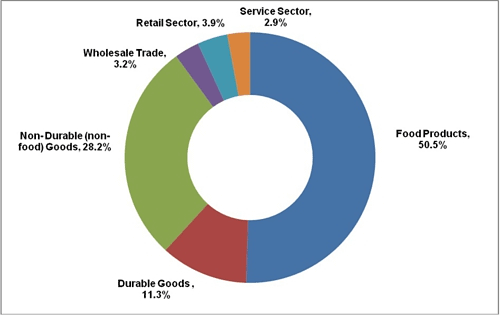

Demand for corrugated boxes traditionally fluctuates with the growth of a wide range of consumer products industries—including both durable and non-durable manufactured goods, the report notes. Thus trends in corrugated shipments can often be explained by general macroeconomic conditions such as changes in real GDP, consumer spending, international trade, and industrial production, factors that affect manufactured goods markets. Following economic trends from 2002 - 2011, corrugated box shipments declined at an average annual rate of 0.6%. However, in 2010 corrugated box shipments rebounded, reflecting the resilience of the broader U.S. economy - increasing 3.6% over 2009 to reach 357 billion sq. ft.—valued at more than $24 billion.
Looking forward, the study finds that retail and packaging trends will play a significant role in determining shipment trends. Opportunities for corrugated in the food and beverage segment will abound as Walmart and other 'big box' retailers remain committed to increasing stocking efficiency and the use of sustainable packaging materials such as corrugated packaging. Corrugated packaging is 100% recyclable, made from renewable resources and is cost-effective to transport and stock produce, meat, and other food products.
Within the food and beverage end-use category, the study finds that beverages, fresh fruit and vegetables, and dairy will see the largest future shipment growth. "This is opening up opportunities for mini-flute corrugated," explains Ken Waghorne, RISI's VP, Paper Packaging, "potentially taking share from markets traditionally dominated by folding cartons."
TAPPI
http://www.tappi.org/